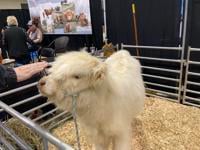According to a press release by the Tennessee Wildlife Resources Agency, the organization has recently proposed a new five-year strategic plan for managing Chronic Wasting Disease, a highly contagious and fatal disease that affects cervid animals like deer and elk.
The strategic plan includes five major goals: (1) preventing the introduction of Chronic Wasting Disease to new areas, (2) surveillance and monitoring of the disease, (3) management of infected animals in confirmed counties, (4) increasing research and (5) outreach to educate the public.
As of June 2022, the Centers for Disease Control has confirmed the presence of CWD in 29 states. In Tennessee, CWD has been identified in 14 counties, primarily in the western part of the state. The TWRA breaks Tennessee into four regions–Johnson County falls into Region IV. At the time of press, CWD has not yet been found in Region IV.
TWRA Regional Wildlife Program Manager John Mike explains how CWD became such an epidemic among free-ranging deer. “CWD is not caused by bacteria or viruses, but by a mutated protein.”
Mike goes on to explain that the protein is present in urine and fecal matter, and deer can pick it up when they eat vegetation that absorbs the protein through the ground. And like many contagious diseases, CWD is difficult to eradicate. “Once it gets here, it’s here,” Mike says. “There’s nothing to cure it.”
Mike reveals that one priority of the CWD strategic plan involves working with hunters and taxidermists to sample more deer for CWD. Each county in Tennessee currently has quotas that must be filled each year.
The TWRA collects these samples through partnerships with taxidermists and hunters and through reports of dead and sick animals that come through the ‘Report a Sick Deer’ form on the TWRA website. These samples are crucial not only to managing CWD but other diseases as well.
A common question from hunters is whether or not meat from CWD-confirmed deer can be safely consumed. “Our recommendation is to follow the CDC guidelines,” Mike explains. “The CDC recommends people not to eat the meat of an animal that has tested positive for CWD.”
If CWD does make its way into East Tennessee’s deer and elk populations, Mike expects that a lot will change. “CWD won’t wipe out the deer herds, but it will reduce the age class of our deer,” he says. “My reading between the lines is that you're going to see not as big racks and very few deer in the 4.5 to 5.5 age class for bucks.”
Disease is no stranger to Tennessee wildlife, but TWRA personnel like Mike are doubling down in their efforts to understand and control CWD. “CWD is the bad guy, compared to other diseases. That’s why we’re doing our due diligence in Region IV and across the state to control the spread.”
The 30-day public comment period began in late December and will remain open until January 29 of this year. The proposed strategic plan can be viewed in full on the Public Notice page on TWRA’s website, and comments may be sent by mail to Wildlife Public Comments, TWRA, Wildlife Division, 5107, Edmondson Pike, Nashville, TN 37211 or emailed to Twra.huntingcomments@tn.gov.



















